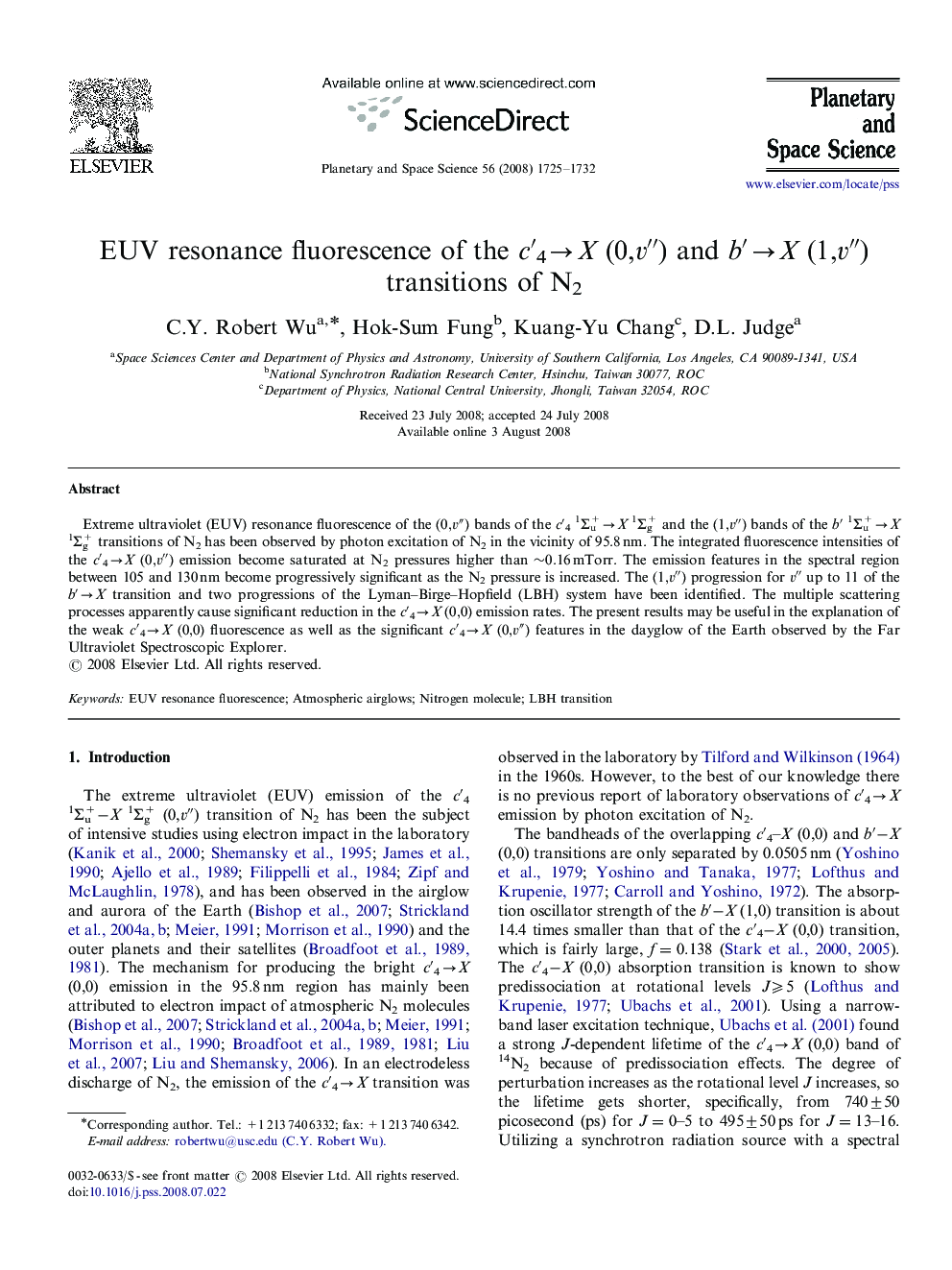| Article ID | Journal | Published Year | Pages | File Type |
|---|---|---|---|---|
| 1782166 | Planetary and Space Science | 2008 | 8 Pages |
Extreme ultraviolet (EUV) resonance fluorescence of the (0,v″) bands of the c′41Σu+→X1Σg+ and the (1,v″) bands of the b′ 1Σu+→X1Σg+ transitions of N2 has been observed by photon excitation of N2 in the vicinity of 95.8 nm. The integrated fluorescence intensities of the c′4→X (0,v″) emission become saturated at N2 pressures higher than ∼0.16 mTorr. The emission features in the spectral region between 105 and 130 nm become progressively significant as the N2 pressure is increased. The (1,v″) progression for v″ up to 11 of the b′→X transition and two progressions of the Lyman–Birge–Hopfield (LBH) system have been identified. The multiple scattering processes apparently cause significant reduction in the c′4→X (0,0) emission rates. The present results may be useful in the explanation of the weak c′4→X (0,0) fluorescence as well as the significant c′4→X (0,v″) features in the dayglow of the Earth observed by the Far Ultraviolet Spectroscopic Explorer.
